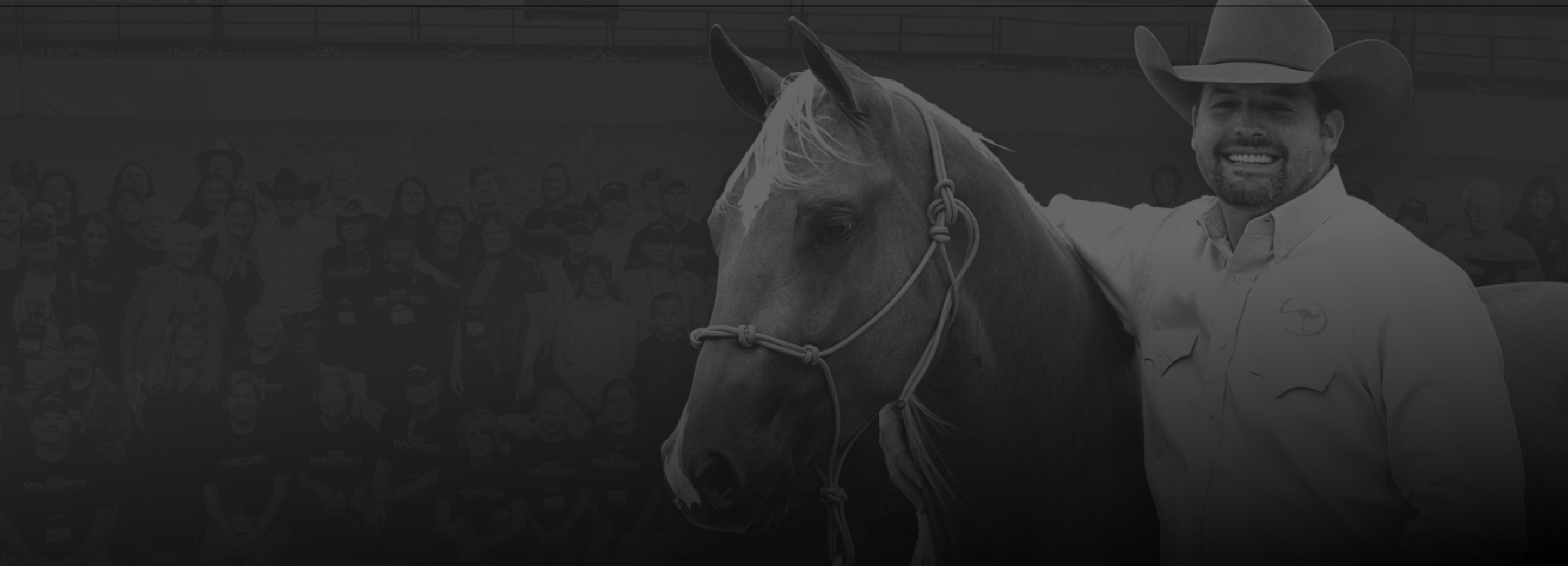For the past 20 years, Clinton Anderson from Downunder Horsemanship has devoted his life to creating the best training tools and videos available to help bring his method to you. Join him on his weekly endeavors of tackling some of the most challenging situations with problem horses, and problem owners. This week, Clinton explains how to address problem horses with the right training tools and techniques.
Clinton begins the episode explaining how one of the most common inquisitions he receives is regarding individual problems with horses. He has people come up to him saying, “my horse bites me, or kicks me, or I can’t catch my horse, etc.” The horse might not stand still or maybe he jigs on the trail. Regardless of what the issue is, these types of behaviors are legitimate problems for the people, their horses, their safety, and even their overall well being. That’s why Clinton tries to get horse owners to understand this one thing—problems with your horse are really just symptoms of a cause. Every problem you could ever encounter will either come from a lack of respect or fear, or in some cases, a mixture of both.
For example, Clinton tells his viewers to think of a horse that bites you. Is biting a problem? Yes, sure it is, but the real reason that it’s happening is because the horse has a lack of respect. Once you get the horse respectful, moving his feet forwards, backwards, left, and right, he won’t bite you anymore. So, is biting the problem or is a lack of respect the problem? In Clinton’s opinion, the lack of respect is causing the biting, so once you get the horse to respect you, the issue will be over.
Another example may occur when your horse bucks with the saddle. If every time you saddle him up, he bucks, you might think it’s because he feels scared of the saddle. Maybe you think it makes him feel trapped or claustrophobic. So, what do you do then? You need to get him desensitized to the front and back cinch, then desensitize him to wearing the saddle. Once you do that, the fear disappears, so the bucking disappears. So, is bucking the problem or is fear the problem? In this case, it’s fear.
Now, every once in a while, you may come across a horse that’s both disrespectful and fearful. Although it’s rare, it can happen. The Downunder Horsemanship Method can help you get your horse to respect you and desensitize them to what they’re afraid of, thus eliminating problematic behaviors. In order to address individual problems, you need to utilize the Method. Clinton always tries to look at a problem behavior with horses like a problem tree. Every branch of the tree is a problem, but if you just chop off the branch, eventually the branch will grow back again. The best way to get every branch on this tree to fall off and be dead forever is to kill the root system of the tree. When you kill the tree root system, all those branches will die and fall off that tree. That’s what the Downunder Horsemanship Method aims to do. It kills the root system of your problem horse, thus causing the rest of the issues to disappear by themselves.
The good news is that if you just follow the Method, the problems will actually fix themselves. Follow the Method step-by-step and your horse’s problems will disappear, you’ll be more successful with your horse, you’ll have more confidence with your horse, and your horse will be more confident with you. It’s really as simple as it gets, just follow the Method.
To learn more about the Downunder Horsemanship training method, become a member of the No Worries Club, or to get information on any of the products seen on our show, head over to our homepage and download the Downunder Horsemanship app today! If you’re interested in getting accelerated results, let a Clinton Anderson Certified Clinician bring the Method to you!

Master Your horsemanship Skills
Like these tips? Join the No Worries Club and hone your skills with thousands of hours of Clinton’s easy, step-by-step method horse training videos.



